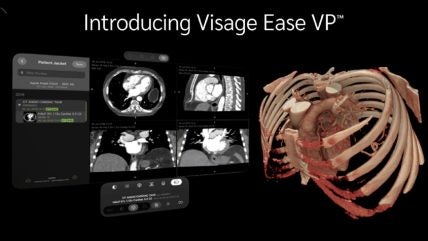
Enterprise imaging solutions provider Visage Imaging has launched Visage Ease VP, a new diagnostic imaging platform designed for Apple Vision Pro.
Visage Ease VP supports diagnostic imaging and multimedia experiences, leveraging the advanced capabilities of the mixed-reality headset.
It builds upon the established features of Visage Ease, integrating Visage’s rendering engine to produce volume-rendered images within an immersive space.
The application allows for high-resolution virtual screens, providing more than 4K resolution per eye.
This enhances the diagnostic imaging process by offering independence from environmental lighting and seamless interaction within the user’s physical space.
Visage co-founder and global chief technology officer Malte Westerhoff said: “Visage’s platform of enterprise imaging applications that support the Apple ecosystem are used by many of the world’s largest, most sophisticated healthcare organisations, and also integrated bi-directionally to the most widely used EHR [electronic health records].”
The application’s design facilitates on-the-go access and uses intuitive inputs such as eye-tracking, hand gestures, and voice commands to improve the user experience.
UC San Diego Health is the first health system to pilot Visage Ease VP.
UC San Diego School of Medicine associate clinical professor and UC San Diego Health radiologist Dr Paul Murphy said: “The visualisation of three-dimensional medical imaging in immersive space creates exciting opportunities to improve patient care.
“Technology that allows for sophisticated eye motion and gesture controls for reviewing 2D and 3D medical imaging could potentially help in efficient tumour board reviews and create collaborative spaces in healthcare.”
Visage Ease VP, also known as visionOS, joins the Visage Ease family of applications specifically created for the Apple ecosystem, alongside Visage Ease for iOS/iPadOS and Visage Ease Pro for iPadOS.
Additionally, Visage offers the Visage 7 smart-client application for macOS, which provides fast, clinically rich, and highly interoperable access to enterprise imaging.







